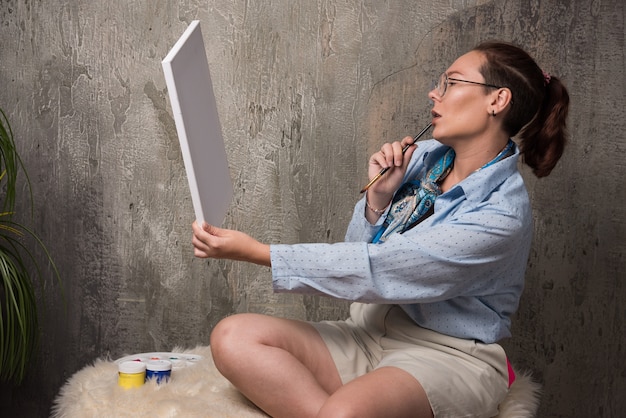The production of United States currency, while a remarkably precise process, is not without occasional errors. These discrepancies, ranging from minor misalignments to significant omissions or additions of design elements, create unique and valuable pieces for collectors. This exploration delves into the various types of printing errors found on one-dollar bills, examining their causes, identification, and significance within the numismatic community. The analysis will consider the historical context of such errors, their impact on the perceived value of the bill, and the methods employed to authenticate genuine errors versus fraudulent alterations.
Types of Printing Errors on One-Dollar Bills

Several categories encompass the printing defects that can occur on a one-dollar bill. These errors, often subtle, require a keen eye and understanding of the standard design to identify. The most commonly encountered types include:
1. Off-Center Printing
One of the most prevalent errors involves the misalignment of the bill’s design elements. This off-center printing can manifest in various degrees, from a barely noticeable shift to a significant displacement of the portrait, serial number, or other features. The degree of misalignment directly correlates with the perceived rarity and value of the bill. Factors influencing the valuation include the extent of the misalignment and the overall condition of the note.
- Severity of Misalignment: Minor deviations are more common, resulting in lower values. Significant displacements, where substantial portions of the design are cut off or heavily skewed, command considerably higher prices.
- Condition of the Note: Even a severely off-center bill with significant damage (tears, creases, stains) will command a lower value than a similarly misaligned note in pristine condition.
- Specific Features Affected: The impact on the value can vary depending on which design elements are affected. An off-center portrait is generally considered more valuable than a slightly misaligned serial number.
2. Double Printing
A more infrequent but highly sought-after error is double printing, where elements of the design are inadvertently printed twice. This could involve a partial or complete duplication of the portrait, the seal, or other design features. The cause often lies in a malfunction of the printing press, leading to the overlapping impression of ink.
- Partial vs. Full Double Printing: Partial double printing, where only a portion of a design element is duplicated, is more common than complete duplication. Complete double printing significantly increases the bill’s value.
- Clarity of the Duplication: The clarity of the duplicated image affects its value. A crisp, well-defined duplication is more desirable than a faint or blurred impression.
- Area of Duplication: The specific area where the double printing occurs influences the overall value. Double printing of the portrait is generally considered more valuable than double printing of other less significant elements.
3. Color Variations
While the Bureau of Engraving and Printing maintains strict color standards, minor variations in ink color can occur due to factors such as ink composition, temperature fluctuations during printing, or slight inconsistencies in the printing press. These variations, although subtle, can be significant to collectors. Identifying these variations requires comparing the note against known examples of the standard color profile.
- Subtlety of the Variation: Slight variations are more common and less valuable than significant deviations from the standard color palette.
- Consistency of the Variation: A consistent variation across the entire note is more valuable than a sporadic, localized color difference.
- Specific Color Affected: Variations in the colors of specific design elements (e.g., the portrait’s shading) may carry different values than variations in the background color.
4. Missing or Imperfect Ink
Instances of missing or imperfect ink can result in incomplete or faded design elements. This could be due to ink supply issues, print head malfunction, or other mechanical problems during the printing process. These errors are categorized based on the affected area and the severity of the ink deficiency.
Read Also: $50 Bill Printing Errors: Value & Rarity – Printing Test Pages
- Extent of Missing Ink: The area affected and the amount of missing ink will significantly affect value. Large areas with missing ink are more valuable than small, localized spots.
- Location of the Defect: Missing ink in prominent areas (like the portrait or seal) will generally be more valuable than missing ink in less significant areas.
- Type of Ink Defect: Whether the ink is completely missing, partially faded, or smeared will also influence the value.
5. Serial Number Errors
Errors related to the serial number are particularly sought after by collectors. These can include:
- Missing Digits: A partially or completely missing serial number is highly collectible.
- Repeated Digits: Unusual patterns or repetitions in the serial number can increase value.
- Misaligned or Overprinted Serial Number: A misaligned or overprinted serial number adds to the note’s rarity.
- Inverted Serial Number: While extremely rare, an inverted serial number is a highly valued error.
Authenticating Printing Errors

The rarity and value of printing errors make them targets for fraudulent alterations. Proper authentication is crucial before assigning value to any allegedly error-containing bill. Methods of authentication include:
- Visual Inspection: Careful examination under magnification is the first step. Assess the consistency of the error and look for signs of tampering.
- Comparison with Authenticated Examples: Compare the suspected error note with documented examples of similar errors. Online databases and specialized numismatic resources can assist in this process.
- Expert Consultation: Seeking the opinion of a reputable numismatist or currency grading service is recommended for high-value bills.
- Ultraviolet and Infrared Examination: Specialized lighting can reveal alterations invisible to the naked eye.
Factors Affecting the Value of Error Bills
The value of a one-dollar bill with a printing error depends on several interacting factors:
- Rarity: The less frequent the error, the higher the value.
- Type of Error: Some errors are inherently more valuable than others due to their complexity or impact on the bill’s visual appeal.
- Condition: The overall condition of the note, including its cleanliness, absence of tears or creases, and overall preservation, plays a major role in determining value.
- Grade: Professional grading services, such as the Professional Coin Grading Service (PCGS) and Numismatic Guaranty Corporation (NGC), assign numerical grades to notes based on their condition, significantly influencing market value.
- Market Demand: The current demand for specific types of errors affects their price.
Historical Context and Significance
Studying printing errors on currency provides insights into the manufacturing processes, quality control measures, and technological advancements throughout the history of United States currency production. Each error offers a glimpse into the occasional imperfections within a system designed for mass production. The study of these errors contributes to the broader understanding of the numismatic field and its evolving landscape.
Collecting Error Bills: A Growing Hobby
The pursuit of error bills has become a popular and engaging hobby for many collectors. It presents an opportunity to delve into the detailed nuances of currency production while accumulating valuable and unique pieces. The hobby encourages detailed observation, research, and an understanding of the historical context of United States paper money. Building a collection of error bills requires patience, knowledge, and a critical eye to authenticate acquisitions.
Resources for Further Research
Numerous online resources and publications provide detailed information on currency errors. Numismatic societies and online forums offer valuable insights and opportunities to connect with other collectors. Reputable grading services also provide information and guidance on authentication and valuation.
Conclusion
The existence of printing errors on United States one-dollar bills highlights the inherent limitations of mass production. These errors, though unintentional deviations from the norm, transform ordinary currency into unique and collectible items. Understanding the various types of errors, their causes, and methods of authentication is crucial for collectors and enthusiasts alike. The field of error bill collecting offers a fascinating blend of history, art, and investment, making it a continually engaging and rewarding pursuit.

